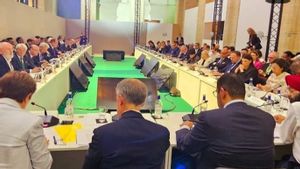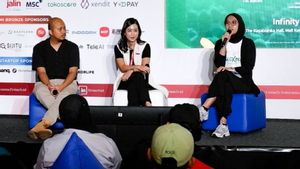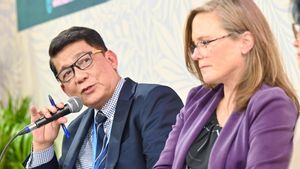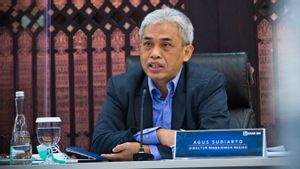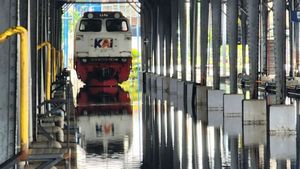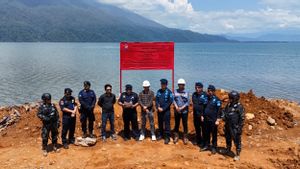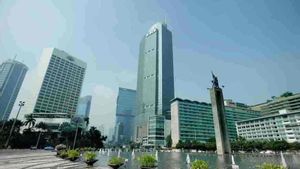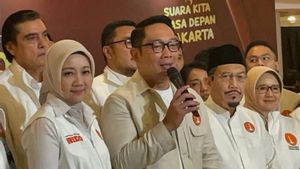JAKARTA - The Net Zero Emission (NZE) target launched by the Government of Indonesia in 2060 will also be the concern and focus of PT Semen Indonesia (Persero) Tbk (SIG). By encouraging innovation of environmentally friendly production technology to present green cement products and their derivatives, the Company hopes that infrastructure and housing development in Indonesia can be more environmentally friendly and help reduce the impact of global warming.
In the talk show Green Industry Conference in the series of Annual Meetings of the Indonesian Engineers Association Chemical Championship Agency (BKKPII) 2024 with the theme Encing Process Safety Management & Green Industry Implementation to Strengthen NZE Acceleration at Diponegoro University, Semarang, on Thursday 26 September, Operations Director of SIG Reni Wulandari said GIS continues to strive to improve capabilities as a company providing leading building materials solutions in Indonesia, and continues to innovate in creating environmentally friendly building materials solutions that are in line with the government's commitment to low-carbon development.
Our commitment is to be part of the solution. Therefore, we set strategy, initiatives, and targets in the Sustainability Road Map SIG 2030 which is the company's guide in transforming towards the green industry and contributing to realizing environmentally friendly development," said Reni Wulandari.
Reni Wulandari added, through the application of sustainability principles in a disciplined manner, GIS is able to present innovative and low-carbon products that are in line with development needs in the midst of the current global situation.
GIS implements circular economic principles to create a sustainable production process, one of which is realized in the use of alternative fuels originating from urban waste which is processed into refuse-derived fuel (RDF), industrial waste and biomass, which replaces up to 20 percent of the use of fossil fuels (coal coal) in the cement production process.
Through this initiative, GIS not only utilizes waste that previously had no value but also reduces dependence on natural resources in cement production.
Reni Wulandari revealed that SIG is taking active steps in energy transition efforts by implementing New Renewable Energy (EBT) in its operational area. The application of solar panels and optimization of exhaust gases through Waste Heat Recovery Power Generation (WHRPG) is part of the GIS's strategy to accelerate the reduction of carbon emissions.
In 2023, GIS recorded an increase in the use of fuel and alternative raw materials by 1.65 million tons across all factories. In addition, GIS managed to reduce GRK emissions from coverage 1 by 4.9 million tons compared to baseline in 2010, as well as reduce coverage emissions by 2 by 0.15 million tons. This initiative reflects SIG's dedication in supporting the climate change agenda and helps build better, said Reni Wulandari.
The cement production process in SIG factories has also implemented a digitalization plant system to optimize and increase production cost efficiency, including through the use of plant optimizers that have been implemented in several factories and will continue to be implemented in other factories comprehensively.
The applied technology carried out by SIG has also produced green cement products, which are cement produced using materials and environmentally friendly processes with lower carbon emissions but have equivalent quality in its allocation class. Cement green by GIS so far has resulted in a lower reduction in carbon emissions by up to 38 percent per tonne of cement compared to conventional cement (OPC).
SEE ALSO:
In line with the commitment to developing green cement, GIS also introduces precise-interlock bricks that have been applied in the Nusantara Capital (IKN) area. This product is the latest cement derivative product innovation that is declared earthquake friendly for areas with a high level of seismicity (KDS D) by the Center for Settlement Research and Development (PUSKIM) of the Ministry of Public Works and Public Housing (PUPR). With the presence of a precise-interlock brick, SIG also contributes to providing a decent and safe sustainable residence for the community, and of course encourages more environmentally friendly construction practices.
SIG Corporate Secretary, Vita Mahreyni said, currently GIS continues to increase operational excellence and efforts to encourage the use of New and Renewable Energy (EBT) at every stage of the production process to accelerate the achievement of the Net Zero Emission 2060 target.
"The use of clean energy such as solar panels is expected to increase the portion of EBT usage and support the Company's target of reducing the intensity of CO2 coverage 2 emissions which is an indirect emission from the use of electrical energy as stated in the Sustainability Road Map SIG, so as to increase the positive contribution to the Government's energy transition program," said Vita Mahreyni.
The English, Chinese, Japanese, Arabic, and French versions are automatically generated by the AI. So there may still be inaccuracies in translating, please always see Indonesian as our main language. (system supported by DigitalSiber.id)




